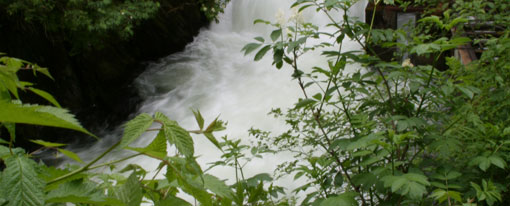Projection mapping, simply put, is using technology to project imagery onto a surface.
The projections can be as simple as indoor stage effects or as complex as video onto buildings and industrial landscapes.
The purpose of projection mapping in events is to provide a more engaging experience for attendees, through visual stimulation.
Imagine trudging into a convention center with expectations of seeing the usual white fluorescent lights and long, drawn-out presentations. As you walk through the doors, you are immediately surprised to hear sweet sounds of crickets and frogs. You feel a slight breeze and the warmth of the sunshine on your skin. As you look around, you are surprised to be surrounded by the invigorating feel of life-like flowers, shrubs and a colorful forest. This convention turns out to be more of a serene escape into the wilderness than a business-like function.
The idea is to use technology to manipulate lighting onto varying surface types and turn common objects into interactive, 3D displays. In fact, it’s increasing in popularity because it’s a vehicle for video trends in events. In essence, it’s like painting with light – a way to add textures, colors and even feelings to an environment. You really can project anything – from sponsor branding, all the way through to cinema-style narratives.
Need Page One Listings? Let Nelsonecom Help You With Search Engine Optimization And Marketing.
If you’ve looked at examples of projection mapping, you’re probably more familiar with those on a larger scale, that create an immersive experience.
You see, if you think in terms of creating an effect for your event, you don’t always need to think about what’s on offer at the top end of the price and size scale.
Working with your AV team, you can often create an impact that’s unique and relevant to your event, without the need for 3-dimensional projection of video that has to be custom built. In fact, projecting onto a non-traditional, but flat surface is possible with off-the-shelf products.

